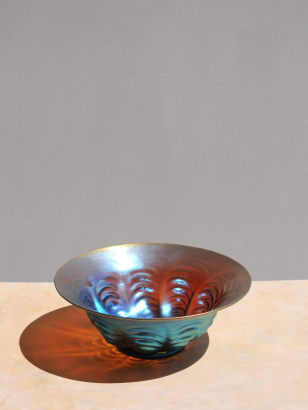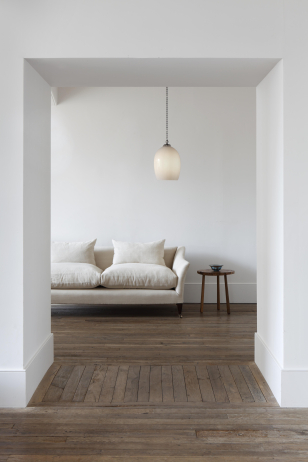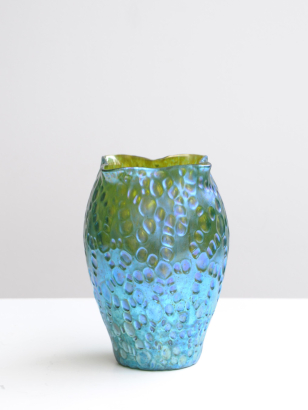Loetz
Biography
In 1836, Johann Eisner established a glassworks in the Southern Bohemian town of Klostermühle, today part of the Czech Republic. The glassworks was sold to Frank Gerstner, attorney-at-law, and his wife Susanne (widow of Johann Loetz) in 1851. Susanne successfully led and expanded the company during the subsequent 20 years. The company was later transferred to Maximilian von Spaun, her grandson. In 1897, von Spaun first saw Tiffany Favrile glass exhibited in Bohemia and Vienna, and this convinced him that the art nouveau style was also the way to go for Loetz. The following eight years were to be the most artistically significant and profitable period in the entire history of the company as they created large numbers of new designs of iridescent, trailing art nouveau glass. The zenith of Loetz art nouveau glass was epitomized by the so-called Phänomen series of designs, which won a Grand Prix at the Paris World's Exposition in 1900.
Although 1904 saw yet another award, a Grand Prix at the St. Louis World's Fair, new artistic impulses were needed to compensate for a lack of in-house innovation, and Loetz intensified its collaboration with Viennese designers like Leopold Bauer, Otto Prutscher and Josef Hoffmann before appointing Adolf Beckert as its new artistic director in 1909. In the same year, von Spaun transferred management of the glassworks to his son, Maximilian Robert.
Financial problems led to Loetz declaring bankruptcy in 1911. Injections of von Spaun family money and the continuing efforts of Prochaska meant that the glassworks could still operate, but the company was dealt severe blow when Beckert decided to leave in 1913, which was followed by a major fire at the glassworks as well as the outbreak of the First World War.
The Great Depression in the late twenties and another fire in 1930 hit the company hard, and during the thirties the glassworks changed ownership several times, often had to close down for long periods and finally declared bankruptcy once more in 1939, following the German invasion of Czechoslovakia. The glassworks manufactured utilitarian glassware for the Third Reich throughout the war, but then ultimately closed down completely in 1947.








